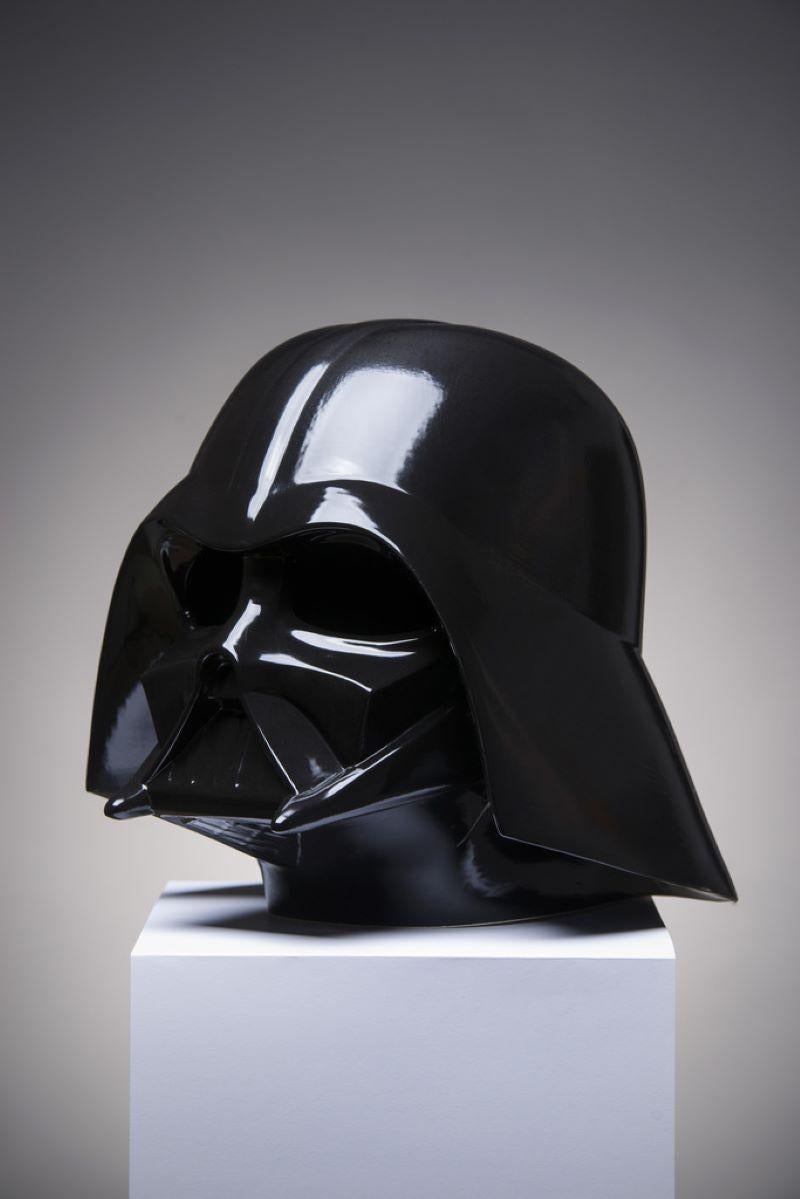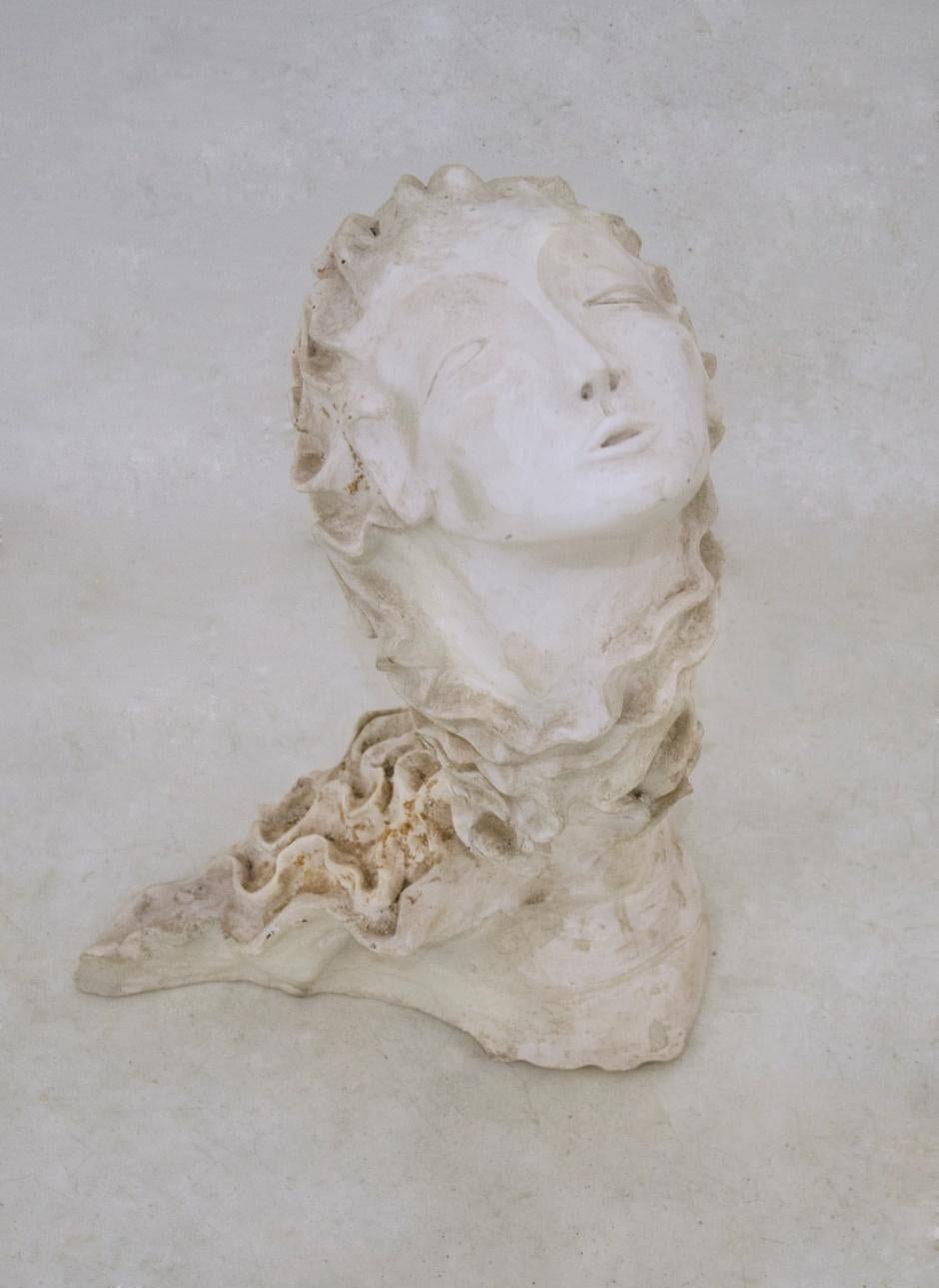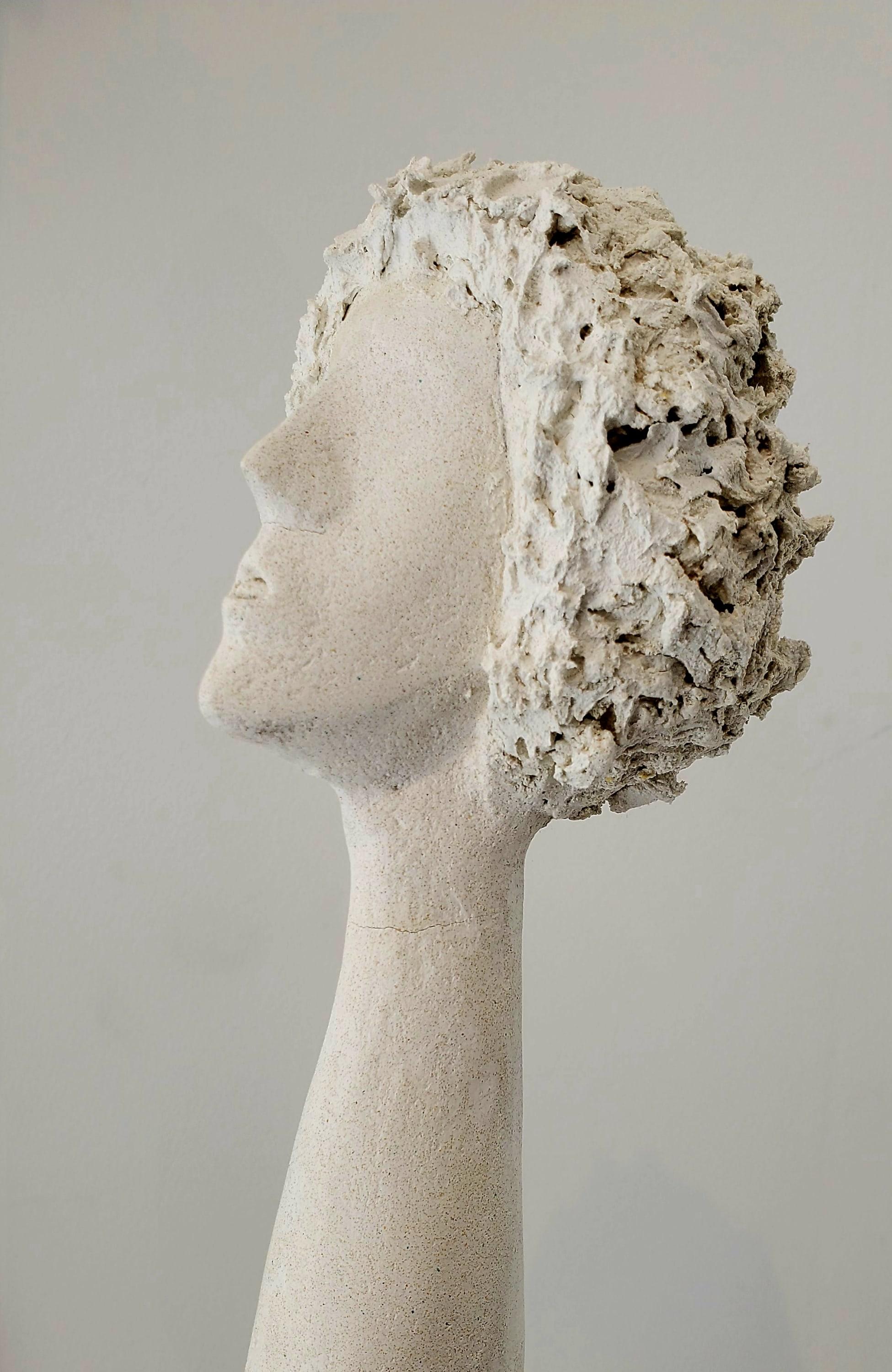Items Similar to Claude-Levy Cast Iron Sculpture of Flora, Dated 1925
Want more images or videos?
Request additional images or videos from the seller
1 of 2
Claude LevyClaude-Levy Cast Iron Sculpture of Flora, Dated 19251925
1925
About the Item
Claude-Lévy, 1895 – 1942
Alice Nikitina in the role of Flora, from the Dukelsky/Braque production of the ballet Zephyr & Flore at the Ballets Russes, 1925
Cast Stone
Signed and dated: Claude-Levy 1925 on rear face of self-base.
The present sculpture is as rare as it is delightful. Mademoiselle Claude-Levy, as the
catalogues of the period list her, was one of the truly original talents of the Art Deco period. Painter, architect, decorator, and sculptor, she was a friend of the Parisian, Modernist sculptors, Chana Orloff, Henri Laurens and the Martel brothers, to whom her work was often compared. The ingenuity of her models brought her great critical acclaim, but she seems to have stopped producing in the early 1930s. Her output, although fine, is rare. Claude-Levy’s gentle Cubism might be better described as Purism in sculpture. It is characterized by simplified surfaces, rounded (as opposed to angular) forms, and smooth, lustrous surfaces. The Purist movement included the painters Léger, Ozenfant and Le Corbusier in its ranks.
Claude-Lévy, along with other artists of the avant- garde living in the Gallic capital (Czaky, Zadkine, Archipenko, Lipchitz, Lambert Rucki Miklos, Nadelman, Vörös, Orloff) helped to develop a collective twentieth century figurative sculptural idiom that exploited the daring and rich possibilities of geometric abstraction.
The present work is Claude-Lévy’s Commedia dell’Arte figures inspired by the Stravinsky/Picasso Ballet Pulcinella, produced by Diaghilev’s Ballets Russes in 1920, with music after Pergolesi and choreography by Léonid Massine. The neo-classical idiom of the piece jibed perfectly with the tenets of the Purist Movement, with its formal clarity, easy accessibility and refreshing immediacy. The figure of Flora was inspired by the ballet Flore et Zéphyr, a collaboration between Braque and the composer Dukelsky (later known in America as Vernon Duke.)
Claude-Lévy was a star talent in Primavera’s stable, an atelier established by the department store Printemps. It engaged the best artists of the day to create a line of luxurious decorative objects for wealthy patrons. Realized in extremely limited quantities, works produced by Primavera number among the finest and most sumptuous productions of the Art Déco period.
Featured at the Primavera Pavilion, Claude-Lévy won a Grand Prix at the landmark Exposition International des Arts Décoratifs of 1925. Her vitrine of ceramics of decorated white enamel was also favorably noticed at the Salon d’Automne of 1929. At the Salon des Artistes Indépendants and at the Salon des Tuileries, she exhibited her paintings of Modernist inspiration, one of which, executed in 1926, was acquired by the French State.
- Creator:Claude Levy (1895 - 1942)
- Creation Year:1925
- Dimensions:Height: 20.87 in (53 cm)Width: 11.03 in (28 cm)Depth: 7.88 in (20 cm)
- Medium:
- Period:
- Condition:
- Gallery Location:New York, NY
- Reference Number:1stDibs: LU2157212758382
About the Seller
No Reviews Yet
Vetted Seller
These experienced sellers undergo a comprehensive evaluation by our team of in-house experts.
1stDibs seller since 2022
- ShippingRetrieving quote...Ships From: New York, NY
- Return PolicyThis item cannot be returned.
More From This SellerView All
- Boris Lovet-Lorski Limestone Art Deco Head, circa 1930By Boris Lovet-LorskiLocated in New York, NYWhite stone head in the art deco style. Born in Lithuania at the end of the nineteenth century, Boris Lovet-Lorski studied art at the Imperial Academy of Art in St. Petersburg before working briefly as an architect. He immigrated to New York in 1920 and became an American citizen five years later. His sculptures epitomize the ideals of the Art Deco decades: comprised of sleek lines and smooth surfaces, the streamlined compositions reflect the new technological forms of the machine age. Despite their modernist treatment, Lovet-Lorski’s elegant, stylized figures reference both ancient and classical sources and are characterized by a universal and serene sensibility. Concentrating on figural busts, familial groups, and standing female nudes as his subject matter, the artist rendered them in a variety of media. The materials range from the traditional bronze and marble to exotic woods and unusual stones; each is carefully selected so that its surface texture and color contribute to the emotive aura of the work. Carved out of a block of limestone, Untitled (Head) depicts a female visage nearly androgynous in its idealization. The delicate features of her face, the long, straight nose, thin pursed lips and high cheekbones, are made even more diminutive by the massive bulk of the stone that serves as their backdrop. The prominent widow’s peak of her hairline and the strong arch of her brow, two of Lovet-Lorski’s most distinctive characteristics, are elongated to accentuate the linear rhythms of the composition. The layers of her hair are delineated by stepped striations reminiscent of archaic precedents, which meld into structural columns and connect the form architecturally to the stone’s mass. Unlike the majority of Lovet-Lorski’s sculptures, in which the heads of the figures are tilted to the side or downward to convey a pensive mood, the woman in Untitled (Head) looks straight ahead. Her frontal positioning gives the composition a nearly perfect symmetry, in turn endowing the work with a still, eternal sensibility. The notched surface of the surrounding limestone stands in sharp contrast to the smoothness of her skin. In the twenties, the artist tended to finish his sculptures to a highly polished degree of refinement, but in the thirties he began to experiment with contrasts of texture and the aesthetic of the fragment. In this respect, the work is vaguely evocative of Egyptian funerary sculptures, in which the figures were carved with an eye for three-dimensionality but were left intact in a larger piece of stone to give them physical durability and permanence. Embodying classical ideals of stoicism and universal beauty, the sculpture ultimately exudes a surface allure that is difficult to resist. A similar example of this approach can be seen in the 1937 sculpture Diana, which resides in the permanent collection of the Hirshhorn Museum and Sculpture Garden, Washington D.C. Carved from a piece of black Belgian marble, the work is a stylized bust of the Greek goddess Diana...Category
1930s Figurative Sculptures
MaterialsLimestone
- William Glackens Watercolor on Paper, "Criticizing Ernest Lawson’s Art Class"By William GlackensLocated in New York, NYWilliam Glackens, 1870-1938 Criticizing Ernest Lawson’s Art Class, ca. 1907 Watercolor and pencil on paper Signed (at lower left): Glackens Inscribed ...Category
Early 1900s Figurative Drawings and Watercolors
MaterialsWatercolor
- William Glackens Drawing Titled "M. Durand... Arrived on the Scene", Dated 1903By William GlackensLocated in New York, NYWilliam Glackens, 1870-1938 M. Durand... Arrived on the Scene, 1903 Ink, wash, charcoal and Chinese white on paper Signed (at lower left): W. Glackens...Category
Early 1900s Figurative Drawings and Watercolors
MaterialsCharcoal
- Oil on Canvas Portrait Painting of a "Fashionable Young Lady" by Irving WilesLocated in New York, NYIrving Ramsay Wiles, 1861-1948 A Fashionable Young Lady Oil on canvas 28 1/8 x 22 5/8 inches Signed lower right: Irving R Wiles Illustrator, teacher, and painter Irving Ramsey Wiles was adept at portraits, figural works, and landscapes characterized by the informal elegance of cosmopolitan American art at the turn of the twentieth century. Wiles received his earliest art instruction from his father, landscape painter and teacher Lemuel M. Wiles (1826–1905), and at the age of eighteen, in 1879, exhibited his first painting at New York’s prestigious National Academy of Design. After one year’s study at the Art Students League in New York, under the influential painter-teachers William Merritt Chase and J. Carroll Beckwith, Wiles went to Paris for further study. He enrolled in the Académie Julian, a popular school among American artists, and then worked in the studio of French academic painter Charles Auguste Émile Durand, known as Carolus-Duran (1837–1917). During his student years Wiles painted watercolor street scenes of Paris, and he also traveled in Italy and in the French countryside. Wiles returned to New York in 1884 and exhibited two of his sketches. These attracted the notice of the art editor of the popular Century Magazine, who asked the young artist to make illustrations for the journal. Wiles’s illustrations appeared in other publications as well, and he also supported himself by teaching at his studio and at his father’s summer art school in upstate New York. Wiles was elected a member of the progressive Society of American Artists and, after one of his works won a prize there, to the National Academy of Design as an associate member; full membership followed in 1897. By that date, Wiles was able to devote himself more fully to portraits and figural compositions in oils, paintings that mark the influence of his teacher Chase, who remained a lifelong friend. Like his mentor, Wiles also worked in watercolor and pastel and belonged to several organizations devoted to those media, which enjoyed revivals in late-nineteenth-century America. He exhibited his work widely and won numerous awards throughout his career. In the late 1890s, Wiles and his father moved their summer classes to Peconic, on the North Fork of New York’s Long Island...Category
1890s Portrait Paintings
MaterialsCanvas, Oil
- Watercolor on Paper Painting, by Charles Burchfield, 1919Located in New York, NYCharles Burchfield 1893-1967 Trilliums and Rock Ledge, 1919 Gouache and watercolor on paper Provenance: The artist until at least 1963 Private collection, New York Private Collectio...Category
1910s Landscape Drawings and Watercolors
MaterialsWatercolor, Gouache
- Watercolor and Gouache on Paper, by Charles Burchfield, circa 1925Located in New York, NYCharles Burchfield, 1893-1967 Wallpaper Design No.2, 1922-28 Watercolor and gouache on paperCategory
1920s Landscape Drawings and Watercolors
MaterialsPaper, Watercolor, Gouache
You May Also Like
- $ 2 from New Zealand (White)By Houben R.T.Located in New York, NYHouben R.T is an Avant-garde painter and draftsman with his own unmistakable voice. Houben was born in Bulgaria and graduated with a degree in painting from the Conservative Art Acad...Category
2010s Contemporary Figurative Sculptures
MaterialsCast Stone, Limestone, Bluestone
- $ 2 from New Zealand (Black)By Houben R.T.Located in New York, NYHouben R.T is an Avant-garde painter and draftsman with his own unmistakable voice. Houben was born in Bulgaria and graduated with a degree in painting from the Conservative Art Acad...Category
2010s Figurative Sculptures
MaterialsCast Stone, Limestone, Bluestone
- Concrete Head Unique Figurative Abstract Geometric Figure Grey In StockBy Thomas JunghansLocated in Utrecht, NLConcrete Head Unique Figurative Abstract Geometric Figure Grey Contemporary In Stock Concrete head is a figurative, abstract, geometric, figure, grey po...Category
21st Century and Contemporary Contemporary Figurative Sculptures
MaterialsConcrete
- OBSERVADORA DEL UNIVERSOBy Carmen GutierrezLocated in San Miguel de Allende, Guanajuatomodern-surreal sculpture, with a wooden base covered in gold leaf. The presence of this observer of the universe transmits peace and fantasy.Category
2010s Modern Figurative Sculptures
MaterialsConcrete
- Deva - La DivinaLocated in Southampton, NYInspired by various facets of his own life story, Salvadoran-American artist J Oscar Molina creates work that seamlessly bridges cultures, industries, a...Category
21st Century and Contemporary Contemporary Figurative Sculptures
MaterialsConcrete, Wire
- Neferet - Mujer HermosaLocated in Southampton, NYInspired by various facets of his own life story, Salvadoran-American artist J Oscar Molina creates work that seamlessly bridges cultures, industries, and feelings. With a commitment...Category
21st Century and Contemporary Contemporary Figurative Sculptures
MaterialsConcrete, Wire





